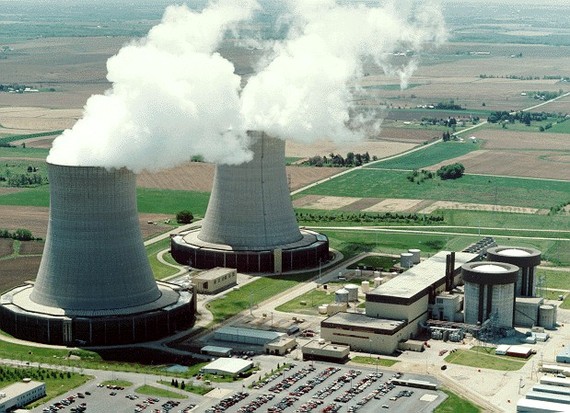After four years of increasingly tense internal discussion, seven Nuclear Regulatory Commission engineers have formally petitioned the governing Commissioners to either order the nation's nuclear power plant to immediately correct a design flaw governing their reactor cooling systems or order them all to shut down.
The flaw is in the original design of the electrical system, and has escaped notice for decades. According to the engineers' petition, as well as a series of staff analyses on file at the NRC, the design flaw occurs in what is called an "single phase" condition in which little or no electricity is entering the plant to operate its backup cooling systems in the event of a blackout or other event cutting off power from the grid. The result is that the motors of backup generators are underpowered and this can cause their motors to burn out. When that happens, there is no way to keep the reactor core cool.
The seven members of the Electrical Engineering Branch in the Office of Nuclear Reactor Regulation, led by Acting Chief Roy K. Mathew, stated in the petition that "the staff determined that all nuclear facilities are susceptible to this design vulnerability except one plant, and recommended that the NRC take prompt regulatory action."
As a result, the petition states, if the plants are not ordered to immediately redesign their electrical systems then the Commissioners should "issue Orders to immediately shutdown the operating nuclear power plants since the licensees are operating their facilities without addressing the significant design deficiency...and with inoperable electric power systems...."
The situation evolved from an unplanned shutdown in January 30, 2012 in Unit 2 of the Byron Station Nuclear Power Plant in Illinois. At the time, it was thought that the shutdowns resulted from a string of unfortunate coincidences. But further examination by the NRC's electrical engineering branch found something more alarming.
Alternating current comes out in three currents, or phases, which are positive, negative, and neutral. At the high voltage levels coming directly from the power plant, the currents are on separate lines, labeled A, B, and C. David Lochbaum, nuclear safety expert with the Union of Concerned Scientists, explained that "the output from A and B are constantly monitored to make sure they are together, or in phase.
"There are circuit breakers and sensors within the system noting if there is a fault and the two are not in phase. When that happens, a circuit breaker opens to block that line and reroute the electricity. The grid operates on the same principal, with circuit breakers isolating lines when there are interruptions so the entire northeast doesn't have a blackout.
"Within the plant there are electrical breakers signaled to open to isolate the problem and others will close for the systems around it. At Byron that didn't happen. And they didn't monitor the phase that failed."
At Byron, however, the single phase, Line C, was not monitored and, in fact, had broken and fallen to the ground between the plant's main transformer and the nearby power substation. Unfortunately, the staff analysis stated, the line on the ground "did not result in a detectable ground fault" since single phases were not monitored. Because of this power shortage, none of the plant's four reactor coolant pumps were operable.
Officials from Exelon, which owns and operates Byron and 10 other nuclear power plants, as well as inspectors from the NRC initially thought that the shutdown was the result of a series of unfortunate coincidences. But On Feb. 28, 2012, there was a similar interrupted and undetected phase which caused a shutdown at Byron's Unit 1. And, as in the earlier event, it disabled the plant's cooling systems. That caused Mathews and the electric unit he led to investigate further and see if there had been any other shutdowns in which an undetected phase disruption disabled the cooling pumps. Their initial look found identical shutdowns at the Beaver Valley Power Station Unit 1 in Pennsylvania in November, 2007; and in New York, the James Fitzpatrick and the neighboring Nine Mile plants, which share a power substation, shut down in December, 2005.
The staff analysis concluded that the design of the electrical systems was "inadequate because it did not consider the possibility of the loss of a single phase... This situation resulted in neither the onsite nor the offsite electric power system being able to perform its intended safety functions" to provide electric power to the plant's safety systems. Plants are required to have two separate sets of electrical power lines and monitors for their core cooling systems so that operators can still control the reactor even if one line is damaged by fire or another event.
The loss of a single phase of alternating current, the NRC staff found, "can potentially damage both trains of the emergency core cooling system." In that case, there is nothing to prevent a meltdown.
In a practical sense, said Lochbaum, who assisted the NRC in updating their operator training manuals, the situation facing Byron resembled a brownout, in which only a small amount of electricity is getting through to the equipment. "The problem at Byron was that all the electrical equipment could not get enough electricity to operate effectively.
"The larger motors on the cooling pumps need a lot of current. If they aren't getting the flow they need they can sit there and try to run, and basically their motors will burn up."
Continue reading at Energy Matters http://bit.ly/1Y9UkjC


